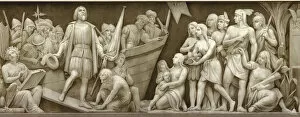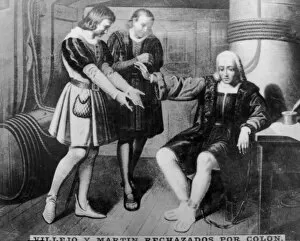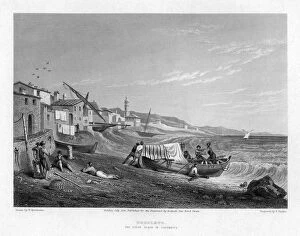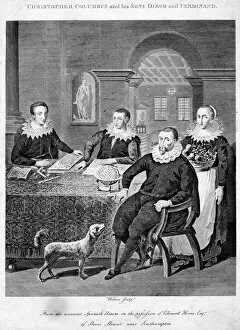Christopher Columbus Collection (page 9)
"Christopher Columbus: The Adventurous Explorer Who Changed History" Step back in time and witness the remarkable journey of Christopher Columbus
All Professionally Made to Order for Quick Shipping
"Christopher Columbus: The Adventurous Explorer Who Changed History" Step back in time and witness the remarkable journey of Christopher Columbus, a visionary explorer who forever altered the course of history. Illustrated with precision and detail, this captivating image depicts Columbus's arrival on an unknown island, proudly displaying the royal banner and cross. Embarking on his daring expedition in 1492, Columbus set sail aboard three iconic ships - the Santa Maria, Pinta, and Nina. With unwavering determination, they sailed towards the West Indies, as depicted in this vivid lithograph from "The Discovery of America" publication in 1878. Guided by Toscanelli's world map from 1474, Columbus navigated uncharted waters with unparalleled courage. His relentless pursuit to find a new route to Asia led him to discover a whole new continent - America. Honored for his achievements across nations stands a magnificent statue in San Juan. This monument serves as a testament to his indomitable spirit and enduring legacy that shaped our modern world. Within the walls of Real Monasterio de Nuestra Senora de Guadalupe lies evidence of Columbus's influence during the Elizabethan Era. An exquisite depiction showcases how his discoveries expanded horizons beyond imagination. Intriguing historical accounts take us back to Salamanca, Spain in 1487 when Christopher Columbus presented his ambitious plans before an esteemed council. It was here that he passionately advocated for his groundbreaking voyage that would change history forever. A portrait immortalizes Christopher Columbus - a maritime explorer whose audacity knew no bounds. Painted by Jose Roldan himself, it captures both strength and vulnerability encapsulated within one man who dared to dream big. The Nao Saint Mary played an integral role in shaping history as it carried Christopher Columbus across vast oceans on multiple expeditions. A symbol of resilience and exploration awaits those who delve into its fascinating story.
















































